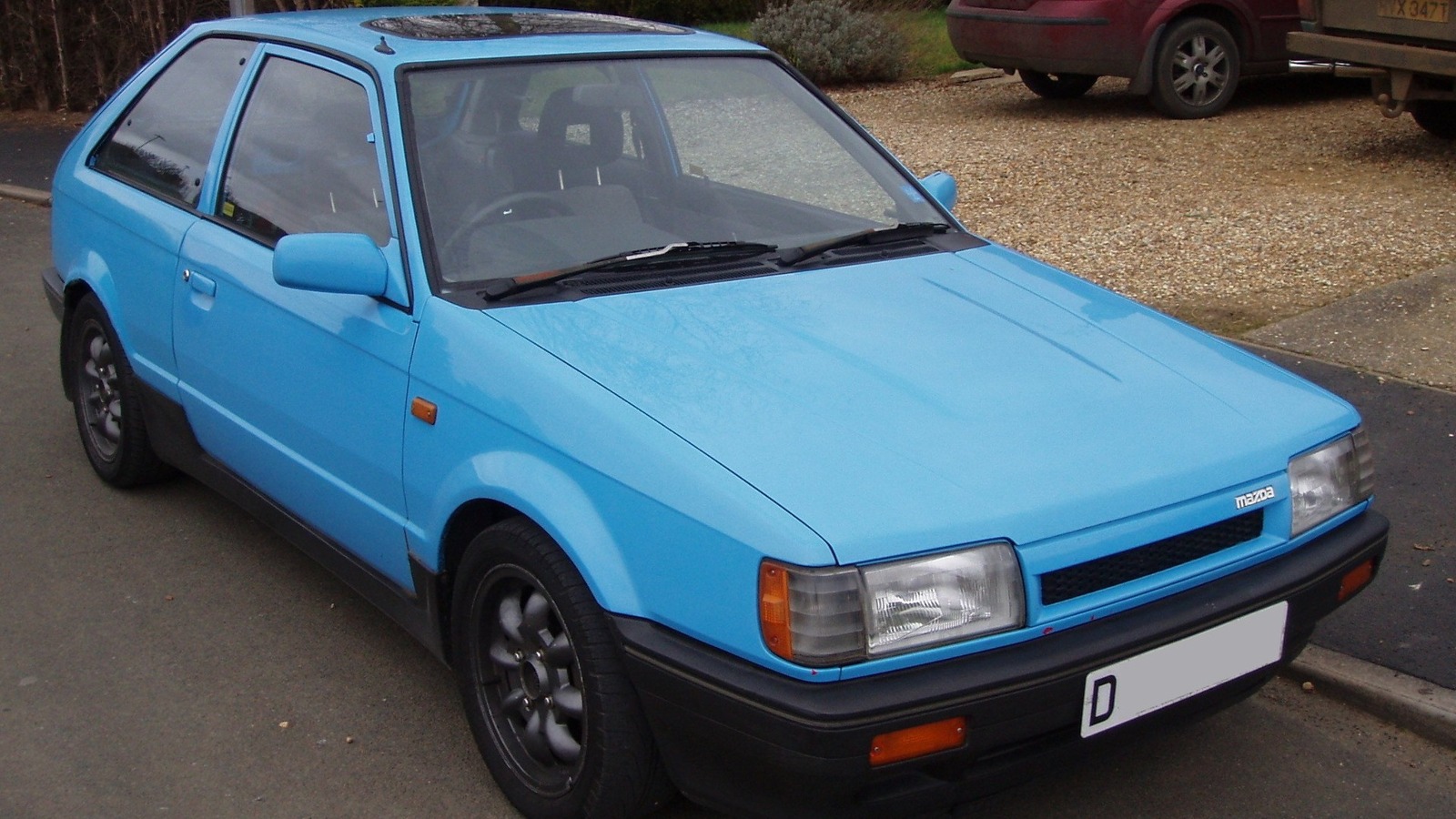
Unlike many hatchback rally wannabes, the 323 GTX had standard AWD and a turbocharged 1.6-liter engine that delivered 132 horsepower. The engine was a cast iron block, intercooled to run denser air into the engine for better combustion, which bumped the power up by 50 horsepower over the base engine. The 1988 Mazda 323 brochure described the design as a double overhead cam, 16 valve, fuel-injected motor with center-mounted spark plugs. If that’s starting to sound like a Miata, that’s because a no-turbo version of the 1.6-liter inline four went into the first MX-5. Why mess with success?
But even a solid engine won’t win rallies, so Mazda applied its motor sports learning to the rest of the GTX, adding a 5-speed manual transmission with overdrive, and giving the body a makeover. By the end of the ’80s, the 323 lineup had added features like front and rear sway bars and updated suspension for better handling in the lightweight car. The limited edition GTX used the 323’s short wheelbase, then widened the stance to compete in the corners with more powerful challengers. A revamped underbody added rigidity to its 2,290-pound weight to handle the brutal pounding a rally car takes.
Before it hit American shores, the GTX had already won Rally Sweden in 1987 with this design. Edmunds.com named the 323 GTX as one of its “100 Greatest Japanese Cars of All Time.”

